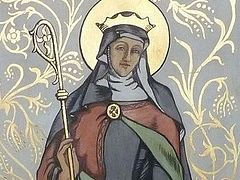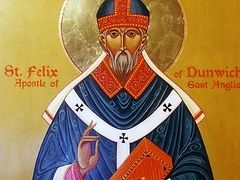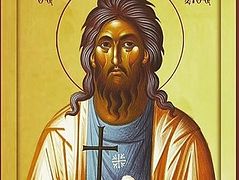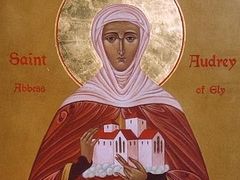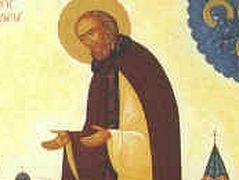The county of Norfolk lies in East Anglia. It is bordered by the North Sea to the east and the north, Lincolnshire to the north-west, Cambridgeshire to the west, and Suffolk to the south. With a total area of just over 2,000 square miles, Norfolk is the fifth largest county in England, yet it is one of the most sparsely populated. In the Middle Ages its main industry was wool, and many wealthy people lived in the region, which accounts for the huge number of grand, spacious churches even in tiny villages in Norfolk. Today its main industries are agriculture and aviation.
The county boasts of 100 miles of coastline, a long network of rivers and lakes commonly known as the Broads, inimitable castles, estates, gardens and museums. Its landscapes attracted a host of painters. It is the birthplace of Lord Nelson and other celebrities. The great English composer Ralph Vaughan Williams called one of his famous works The Norfolk Rhapsody. Spiritually, Norfolk is a county of a great many ancient holy places, inferior only to the Celtic regions of Cornwall and Cumbria for the concentration of sites associated with saints. Let us now talk about one of Norfolk’s Orthodox saints, whose veneration has been more or less limited to East Anglia, but who is unique in his own way.
***
The first and most authentic account of the life of St. Walstan, also known as “Walstan the Generous”, was written soon after his repose. Unfortunately, it has not survived to our day. His later Lives in English and Latin were composed in the fourteenth and fifteenth centuries: the former is in verse, while the latter, made on a wooden dyptich, originally hung over his shrine (both survive). Though these accounts are a mixture of facts, old traditions and folklore, we still can recreate an image of the holy man. Over the past century a keen interest in this unique saint has developed among Orthodox, Catholics and Anglicans in East Anglia; more recently the prominent Suffolk historian Carol Twinch has thoroughly researched St. Walstan. Let us recall his Life.
In about 975 a child was born in the village of Bawburgh (now a mile from the outskirts of the city of Norwich) in what is now Norfolk. His parents were called Benedict and Blide (Blitha). According to later legend, they were nobles related to the Royal Family. Their son was baptized Walstan. From the example of his parents, who possessed a library, little Walstan came to love reading, and especially the Holy Scriptures. The boy was impressed by the verse in the Gospel of Luke, Whosoever that forsaketh not all that he hath, he cannot be My disciple (Lk. 14:33). It touched his heart so deeply that Walstan decided to keep this commandment to the full. Thus at the early age of seven Walstan promised to renounce all for the love of God and to devote himself to the Lord in humility and anonymity. Shortly before his thirteenth birthday, Walstan told his parents that he must leave their home forever. Benedict and Blide, who had been warned of their son’s destiny in a dream by an angel, consented to his wish, though they grieved deep in their hearts.
So Walstan left his parents’ home and set forth on his journey. When he was passing the settlement of Costessey (now a small suburb of Norwich divided into two parts by the River Tud) he met two beggars to whom he gave his rich garments and then dressed himself in the pauper’s clothes. An hour later the path led him to the village of Taverham (now also a suburb of Norwich), a few miles north of Bawburgh, where he decided to rest. A peasant called Nalga who owned a large farm offered Walstan work. The latter agreed.
Thus the man of God became a farmhand on Nalga’s lands and remained at Taverham till the end of his life. Very soon he gained a reputation for hard work and piety, developed an affinity with the poor and was extremely charitable, giving both his food and clothing to all who needed them. Nalga gave him pay, but the saint would immediately share most of it with the needy. He would often carry out his work barefoot. Nalga’s wife, out of pity for him, would give him new shoes and extra food. But Walstan would instantly give all away to passing beggars. Once Nalga and his wife got angry with him for this, but Walstan explained to them that poor people are sent us by God to test whether we love Him more than ourselves. One day Nalga’s wife had a temptation: as mockery she sent Walstan to the wood to fetch briars, rambles and nettles. But by miracle the saint easily trod through the thorns, as if they were as soft as rose pedals, giving off a most sweet fragrance. Seeing this, his employers bowed down before Walstan in remorse. But humble Walstan was not offended and continued to love them.
Many years passed. Walstan became known and loved by everybody in the area for his gifts of prayer, fasting, hard work, purity, and abundant love for all God’s creatures, man and beast alike. The Almighty bestowed the gift of miracles on His faithful servant. Through his prayers people were cured from many ailments, and animals were frequently brought to him for healing. Every kind of work prospered through the gentle Walstan’s labors and the Creator blessed whatever he did. To the end of his life, Walstan lived on Nalga’s farm in quietness and poverty, keeping his royal origin a secret and giving away the wages he earned. It is believed that St. Walstan often retreated for quiet prayer to an ancient Christian cross nearby, took part in the building of a little church and in the final years of his life had regular visions. Even his parents who lived very close in Bawburgh did not suspect that the kind-hearted saintly farmhand at Taverham, of whom they surely heard, was their son.
Nalga and his wife were childless. So they grew very fond of Walstan and wanted to make him their heir. But he kept refusing and continued to labor zealously on the farm for twenty-eight years. Though he did accept from Nalga one gift, namely two white calves and a wagon. This was not out of self-interest: an angel had commanded him to do so, as it was the will of God.
One day in May 1016, at the start of the haymaking season, Walstan was mowing with another laborer when an angel appeared to him, saying, “Walstan, on the third day after this you will depart this life and enter Paradise.” (The angel remained invisible to his companion). The man of God at once put down his scythe and went to the village priest, asking him to come on the third day and give him Holy Communion for the last time. On the same day the man of God heard the heavenly music of a chorus of angels and beheld a great many angelic hosts glorifying the Holy Trinity.
Meanwhile, Nalga (according to another version, St. Walstan himself) went to the market in Norwich, which was then under the control of the Danish King Canute (this was a very turbulent period in English history, with the Danes settling in parts of East Anglia and England and two kings alone in the year Walstan died; some believe that it was one of the reasons why Walstan never left his beloved refuge of Taverham). There he heard an announcement that anyone knowing the whereabouts of Walstan, a kinsman of the English King, should inform the authorities as soon as possible. Nalga learned that the king was sending his people to search for Walstan. They warned that whoever was sheltering Walstan must deliver him without delay. “What will I say when the Danes learn that I have kept you here?” Nalga asked Walstan when he returned home. The saint answered that he must tell the truth. He then disclosed the angel’s revelation to him. This episode can be found in the medieval Life of St. Walstan which claims that he was a relative of the English kings, whereas a number of hagiologists argue that Walstan was of a peasant origin (hence his closeness to common people) and the later authors had simply elaborated the story, making his spiritual nobility into physical nobility.
So, whatever the truth regarding the saint’s origin, it is known that on Monday May 30, 1016 the village priest came to Walstan while he was mowing in the fields. He had worked with his scythe until the morning ended and then his final hour came. As the priest prepared to give Holy Communion to Walstan, the latter realized that there was no water to wash their hands. Walstan prayed on his knees, and, lo and behold, at once a spring gushed up before him. Having taken Communion, Walstan told those gathered there that after his repose they were to place his body on the wagon and yoke it to the two white calves. “You need not lead them, but the calves will be driven by the Lord Himself,” the saint said. He then offered up a prayer and asked the Savior that every sick peasant and laborer and beast should receive relief and healing of their infirmities through his intercessions, provided they prayed with true faith. At that moment a voice was heard from above, saying, “Walstan, what you have asked will be granted. Come from your labors and enter into eternal bliss.” It is one of very few cases in the Lives of early English or Celtic saints that involves the voice of God conversing with a saint!
 St. Walstan's stained glass window inside Our Lady and St. Walstan's RC Church in Costessey, Norfolk (photo provided by the rector of RC church of Costessey)
St. Walstan's stained glass window inside Our Lady and St. Walstan's RC Church in Costessey, Norfolk (photo provided by the rector of RC church of Costessey) The relics of the holy man were enshrined inside Bawburgh church. A new chapel was erected on its north side where the saint’s holy body rested. The church, then dedicated to St. Mary the Virgin, was later rededicated with St. Walstan becoming its co-patron. The saint’s veneration was approved by the local bishop “by popular consent”, and the accounts of Nalga and his wife, of the people who knew Walstan and the priest who was his confessor were recorded. It was at that time that St. Walstan’s parents (who were still alive) learned the story of their son’s adult life in detail and they too began to venerate him. As for his mother, Blide, she outlived her son and reached great old age. Famous for her ascetic life, she was locally venerated as a saint after her death. The relics of St. Blide were for centuries kept in a special chapel in the Church of St. Mary the Virgin in the village of Martham in Norfolk, but they disappeared during the Reformation (her feast-day is unknown).
The sites of St. Walstan’s birth (Bawburgh), labors and death (Taverham), along with Costessey, became renowned places of pilgrimage. Through Walstan’s prayers, the Lord performed abundant miracles of healing on man and beast alike and all those who sought healing at the three mentioned springs were cured. The possessed were delivered from demons, the deaf and dumb were healed, those with fever, palsy and lameness recovered, those with eye diseases were cured by washing their eyes in the water from the wells. Thus Walstan became the patron-saint of farmers, farm-laborers, farmhands, husbandrymen, mowers, haymakers, reapers, herdsmen, villagers, farms and farm animals in Norfolk and all East Anglia. And indeed in subsequent centuries peasants and farmers from other regions of England flocked to St. Walstan’s shrine and wells in great numbers. Many brought their sick animals and cattle with them—and many were healed.
St. Walstan was perceived as a saint of the common working people who regarded him as one of them. The holy man was close to the rural folk in his lifetime and remained such after his repose. That is why his memory was never erased. The influx of pilgrims was so great that Bawburgh church had to employ a whole team of priests who were charged to receive them, perform prayers and arrange services. Believers’ generous donations contributed to an extension of the church of Bawburgh in the ensuing centuries.
St. Walstan’s shrine remained a site of pilgrimage until the terrible Reformation, when his relics were destroyed in 1538. Though the veneration of saints was forbidden, the villagers of East Anglia never forgot him and continued to flock to his holy wells—to bathe in and drink their waters—despite the danger of punishment. It should be noted that the surroundings of Norwich were one of the centers of “underground” Catholicism all the time after the Reformation, known as the Penal Years, though this religion was officially banned. Therefore, some pious recusant Catholic families passed on the stories of St. Walstan from generation to generation.
 Banner of St. Walstan at Our Lady and St. Walstan's RC Church in Costessey, Norfolk (provided by RC church rector of Costessey)
Banner of St. Walstan at Our Lady and St. Walstan's RC Church in Costessey, Norfolk (provided by RC church rector of Costessey) Let us mention several of the documented miracles performed by Walstan (with the kind permission of Nick Walmsley, the author of a paper on this theme, who used Fr. Frederick Husenbeth as his main source). Firstly, a bombazine weaver from Costessey, Francis Bunn, suffered greatly from an open sore on his leg from childhood, while no medicines would help him. He was a Methodist and during his stay in Ireland at the time of the Napoleonic Wars he married an Irish Catholic woman. Then they returned to England. Several years later, on his wife’s advice, he resolved to visit St. Walstan’s well in Bawburgh (being a strict Protestant before) and at once had his leg completely healed, a fact attested by priests, doctors and relatives of his. Secondly, in 1839 a French Catholic nun living in London felt so unwell that best physicians were helpless and said she would die at any minute. But as soon as some water of St. Walstan’s well and some moss were brought to her and she took several sips, her illness went away. Thirdly, a few years later, another Catholic nun in London was cured from consumption [tuberculosis] by the same remedy (with medical confirmation). Fourthly, in 1913 a case of advancing blindness was cured by application of the same moss (again with doctors’ confirmation). Fifthly, in 1927 a farmer’s horse suffered from an open sore so terribly that it was taken to St. Walstan’s well. It was washed there for ten days and was cured.
In 1989, St.Walstan was declared the Patron-Saint of the British food industry and farming. Several years ago some local media claimed the decrease of one infection among East Anglian farm animals and attributed it to Walstan’s intercession. In recent years the veneration for and fame of Walstan has spread to other regions of England and beyond, reaching even Kenya. This wonderful saint is venerated by some believers in Russia as well. 2016 was marked by series of celebrations of the millennium of St. Walstan’s repose (with Anglican and Catholic bishops participating) that involved Orthodox believers living in the U. K. as well.
St. Walstan is usually depicted with a scythe and a crown or scepter, also with two white calves beside him. There exist Orthodox icons of St. Walstan and a contemporary Orthodox canon to him in English, which begins thus:
Troparion, Tone 4
O Righteous Walstan, thou didst leave thy home to labor for Christ in the fields of Taverham. Through fasting, prayer and great humility thou hast gathered many for the harvest of Christ. The Lord crowned thee as a saint and bestowed upon thee the gift of miracles. Pray then that our souls may be saved.
Holy sites of St. Walstan in Norfolk
Let us now talk about the three holy sites associated with him in Norfolk.
Bawburgh is a picturesque village in the valley of the River Yare whose tranquil atmosphere contrasts with the hustle and bustle of the neighboring city of Norwich. St. Walstan's Day is celebrated each year here with a procession and special service on the nearest Sunday to May 30 (his feast according to the old calendar). The well was restored not long ago and is full of water. Nowadays the well, a little downhill from the church, is occasionally decorated with flowers and other ornaments, the tradition is called “well-dressing”. 100 years ago the Bawburgh well was nicknamed “Norfolk’s Lourdes”.
The beautiful Sts. Mary and Walstan’s Church in Bawburgh is one of the 125 existing East Anglian churches with distinctive round towers, and it is one of the loveliest of these. The church contains minor late Saxon elements. Its main treasures inside are a fascinating wooden statue of St. Walstan and his Orthodox icon in the nave. The chapel that housed the patron-saint’s relics was on the north side of the church. Under Henry VIII the saint’s holy remains were barbarously burned, while the shrine and the chapel demolished. Among other church’s gems is a rare old wooden collection box dating back to the early Protestant period or earlier. Besides, there are a recently restored rood screen, a large number of the pre-Reformation brass memorials and a set of late medieval stained glass windows, depicting the Annunciation, angels, Great-martyr Barbara and others. The Church of Sts. Mary and Walstan was left derelict following the Reformation and could have decayed but for the restoration work, carried out 100 years later, which saved it. Services have been held here ever since. A couple of years ago there appeared a tradition to organize “re-enactments” of “the way of the calves” with Walstan’s body with local children as part of the celebrations.
 Rear of the Our Lady and St. Walstan's RC Church in Costessey, Norfolk (provided by the rector of RC church in Costessey)
Rear of the Our Lady and St. Walstan's RC Church in Costessey, Norfolk (provided by the rector of RC church in Costessey) Costessey is a large village and parish near Norwich which was founded in about 600 AD. Its modern history is closely connected with Fr. Frederick Charles Husenbeth (1796-1872), a Catholic priest and missionary who served in the parish for fifty years, was a prolific writer, founded the Catholic Church of Our Lady and St. Walstan in 1841 and promoted this saint. The church he founded is active to this day and our saint is deeply venerated here. The church chancel has stained glass windows dating back to the time of its foundation and one of them depicts Walstan: it can be found behind the altar (the Mother of God can be seen on the left panel, Christ – in the center, and Walstan – on the right).
 During a cross procession of the RC parish of Costessey to Bawburgh, Norfolk (provided by the rector of the RC parish of Costessey)
During a cross procession of the RC parish of Costessey to Bawburgh, Norfolk (provided by the rector of the RC parish of Costessey)
 An icon of St. Walstan inside Our Lady and St. Walstan RC Church in Costessey, Norfolk (provided by the RC church rector at Costessey)
An icon of St. Walstan inside Our Lady and St. Walstan RC Church in Costessey, Norfolk (provided by the RC church rector at Costessey) There is a modern icon of the saint at the front of the church painted by their Master of Music who is also an artist. In 2016, they had a small plaque placed beneath the icon. The ancient well at Costessey, though dry for many years, was rediscovered and identified by a local historian a few years ago and its blessing ceremony took place two years ago. It is still visible west of the Costessey Hall site near a new housing estate. This well is now in the grounds of the local golf course, though they have given the Our Lady and St. Walstan’s parish permission to visit it once a year for a short service. The parish has a new picture of St. Walstan and an angel in their meeting “garden room” by the church and a piece of flint from the well was embedded into its wall. In past years parishioners of Costessey walked in procession to St. Walstan’s well in Bawburgh close to his feast-day.
 A picture of St. Walstan and an angel inside the garden room near the Our Lady and St. Walstan's RC Church in Costessey, Norfolk (provided by rector of RC church, Costessey)
A picture of St. Walstan and an angel inside the garden room near the Our Lady and St. Walstan's RC Church in Costessey, Norfolk (provided by rector of RC church, Costessey)
Taverham is a large village some miles north-west of Norwich. It is over 1,000 years old. In the nineteenth century it was a major producer of paper. The memory of St. Walstan is kept here. The village church is dedicated to St. Edmund and the parish venerates and commemorates our saint. The church has stood here for a millennium: it was mentioned in the Domesday Book of 1086 and parts of its nave and the tower base retain Saxon fabric. It has no memorials of St. Walstan, but these were probably destroyed during the Reformation and the Victorian-era restorations. Among the church’s unique survivals are the fifteenth-century stained glass windows and an early font with intricate carved figures of saints. Modern researchers have identified the approximate site of the Saxon village where Nalga’s farm was (behind the church towards the River Wensum) and where the pre-Norman church used to stand (on the site of the present church).
Locals are sure that Walstan lived very near the current church, the area then was surrounded by forest and settled by English people. Not long ago a consecration cross dating back to about 800 AD was discovered in St. Edmund’s churchyard and has since been placed inside the church. It may be the very cross by which the saint used to pray with a group of Christians. There is a well in Taverham. It is located not far from the church, which may be from the spring which emerged on the day Walstan died. There is no reason to think it is not. It lies to the south of the church at the end of the churchyard in a privately-owned property. The well works. Though modest, Orthodox pilgrimages to this well and the consecration cross are being revived.
 Depiction of St. Walstan on the screen of St. Andrew's Church in Great Ryburgh, Norfolk (provided by the churchwarden of Great Ryburgh church)
Depiction of St. Walstan on the screen of St. Andrew's Church in Great Ryburgh, Norfolk (provided by the churchwarden of Great Ryburgh church) Our saint is depicted in the Church of Sts. Peter and Paul in Barnham Broom in Norfolk, where he appears on the fifteenth-century rood screen together with Sts. Withburgh, Etheldreda and others; in St. Edmund’s Church in Fritton in Norfolk, where he is depicted in fine stained glass (along with Sts. Felix, Etheldreda, Withburgh, Wendreda, Fursey, Ethelbert etc.); in St. Catherine’s Church in Ludham in Norfolk where he is featured on a splendid rood screen; in St. Andrew’s Church in North Burlingham in Norfolk where he appears together with Sts. Benedict, Withburgh, Etheldreda and others on a fine rood screen, created just before the Reformation; in St. Mary’s Church in Sparham in Norfolk where he is featured on a partly surviving late fifteenth century rood screen; in the round-towered Holy Trinity Church in Gisleham in Suffolk where his somewhat indistinct image can be seen among wall-paintings; in Sts. Peter and Paul’s Church in Foxearth in Essex (reputedly the county’s tallest church) where his image can be seen alongside many other saintly people.
Thus, the memory of a meek, hard-working saint and hero, a wonderworker who is quick to help the afflicted, an example of simple life, devotion and self-sacrifice, is preserved among Christians.
Holy Father Walstan, pray to God for us!








